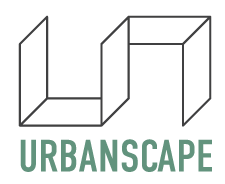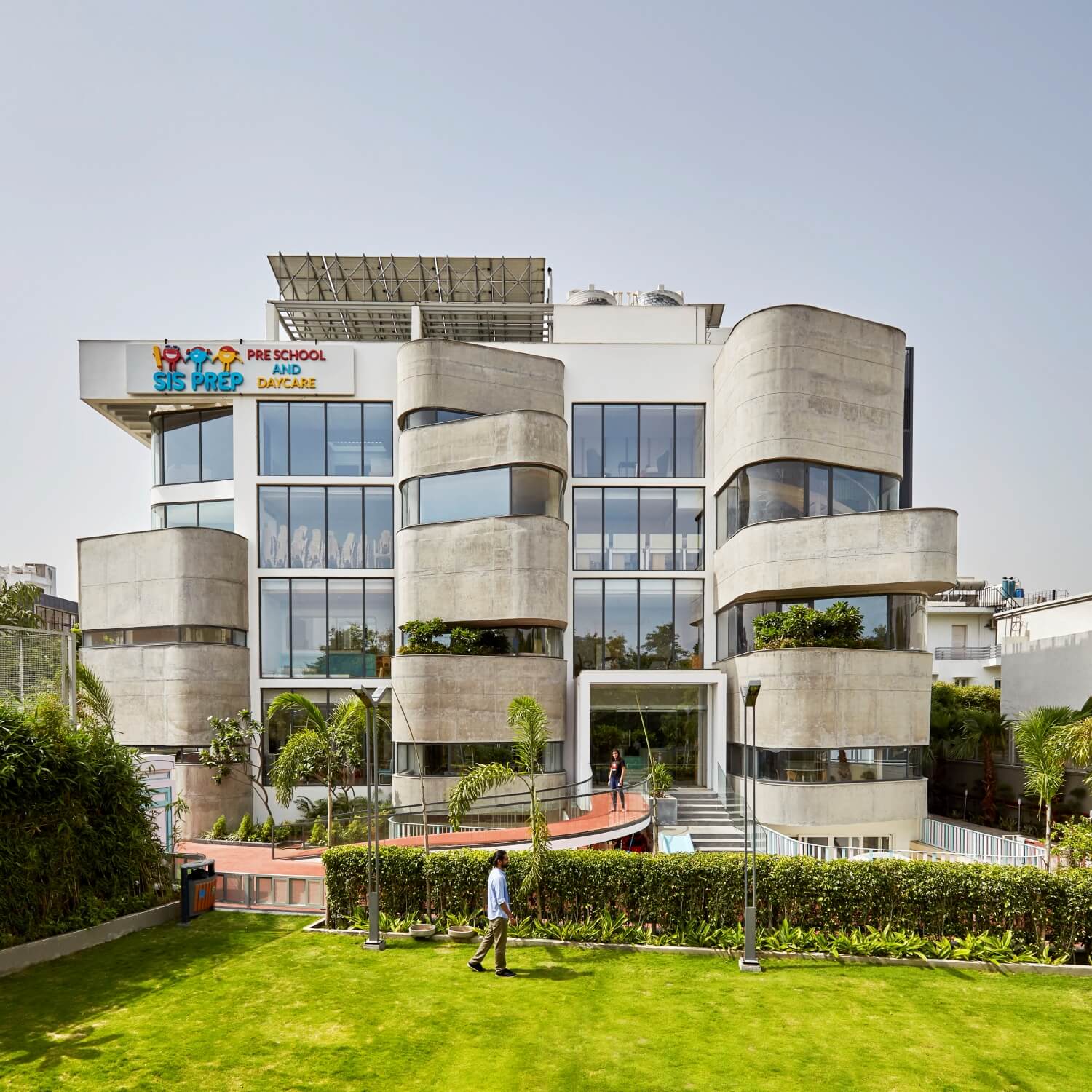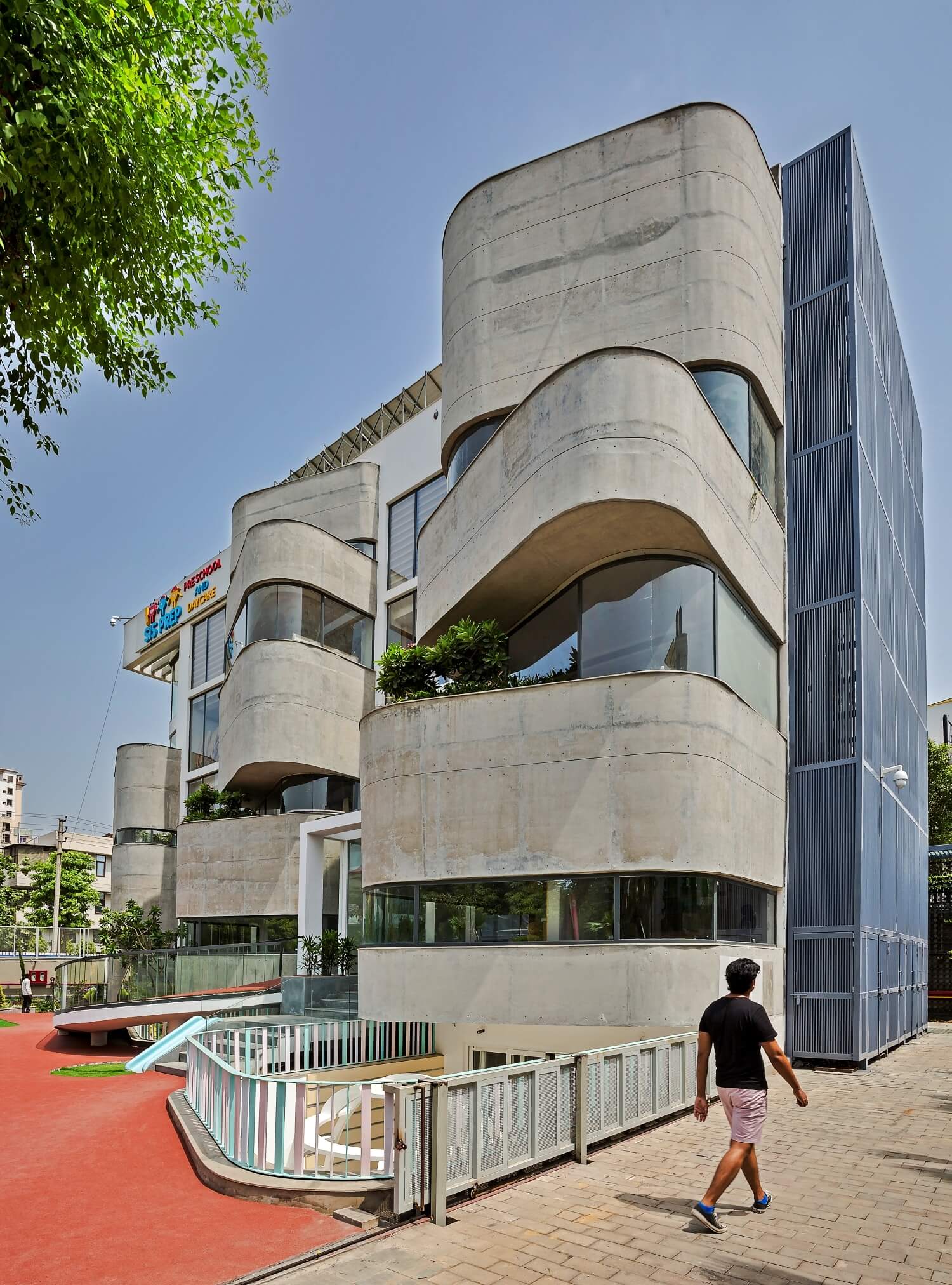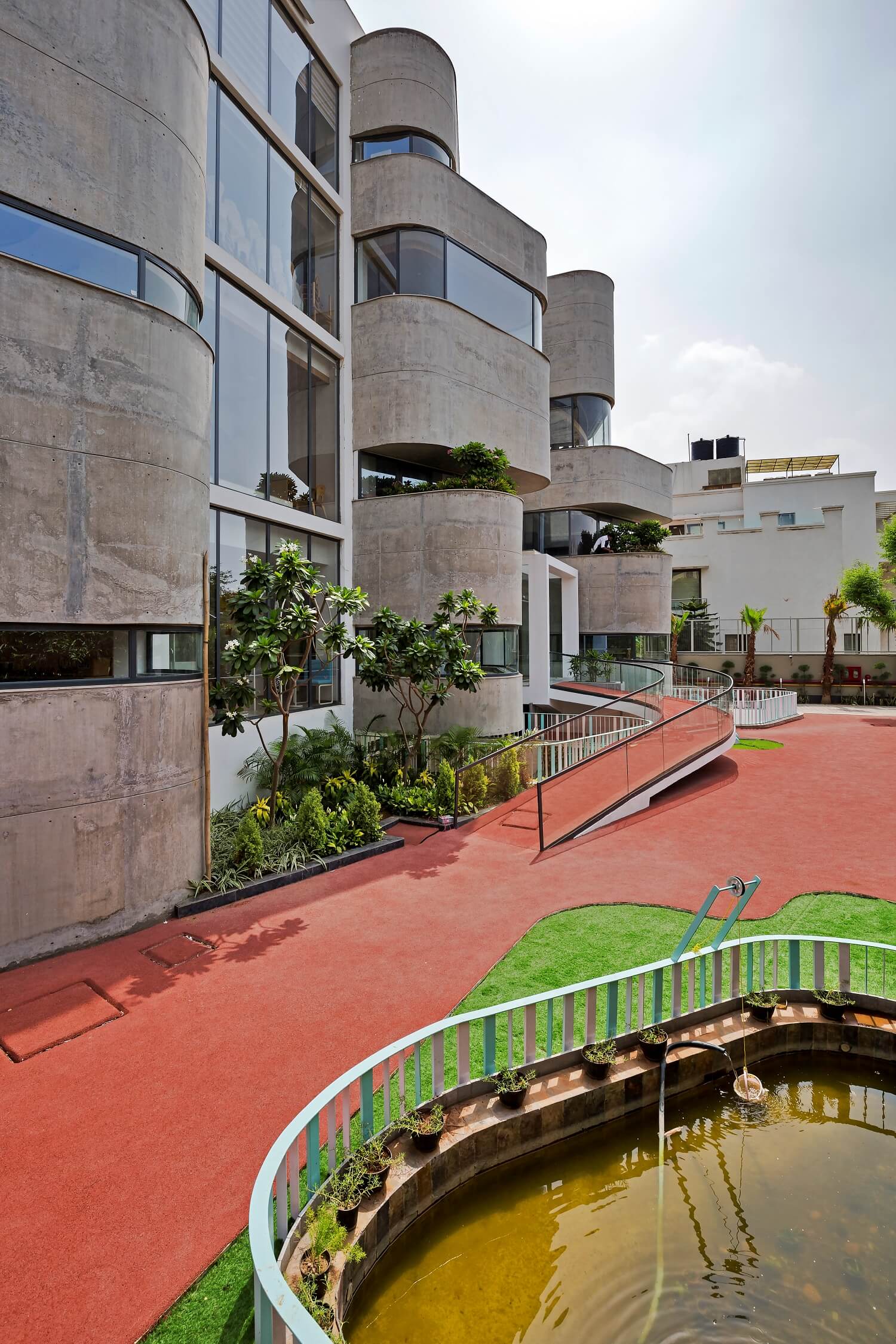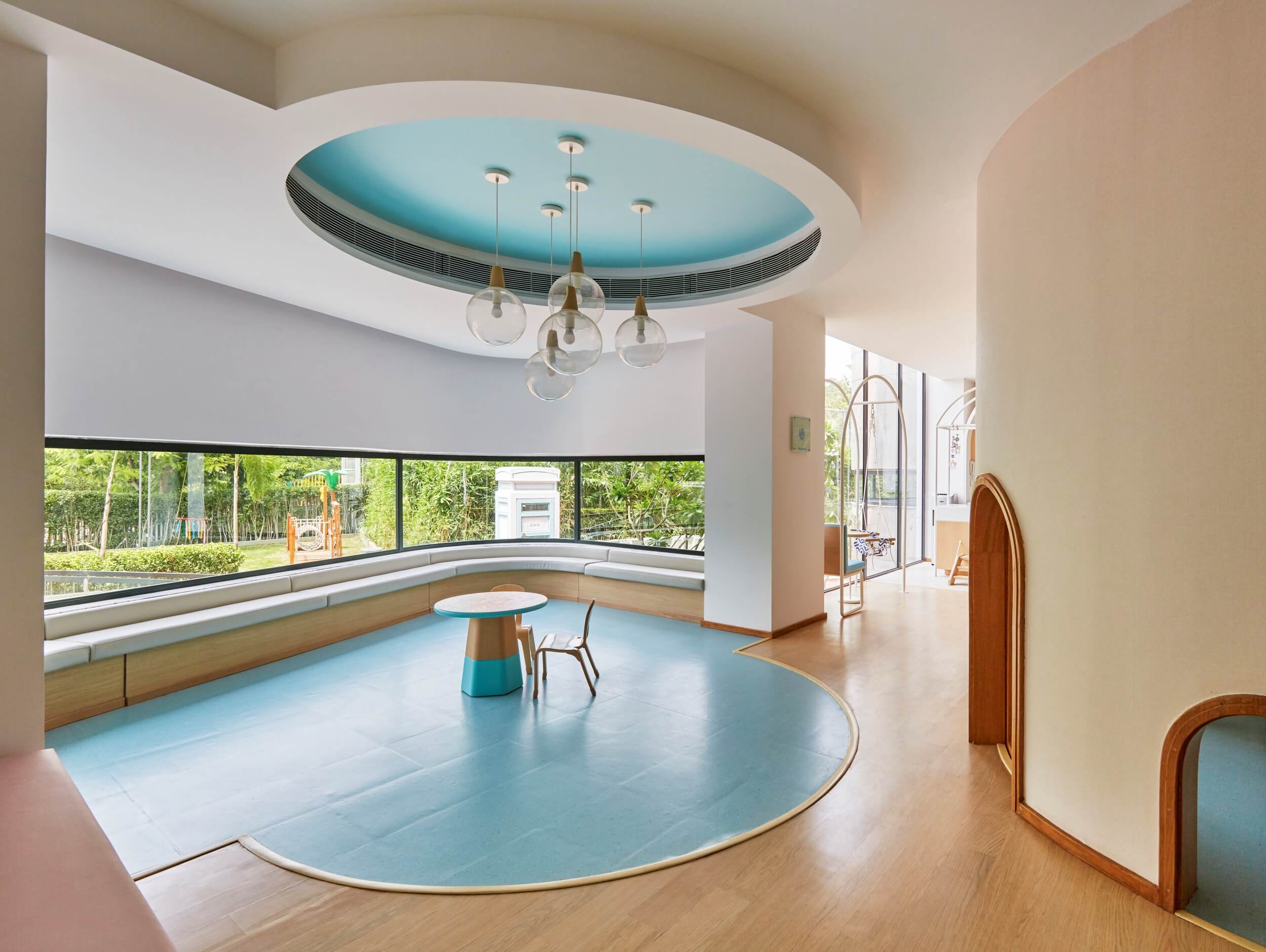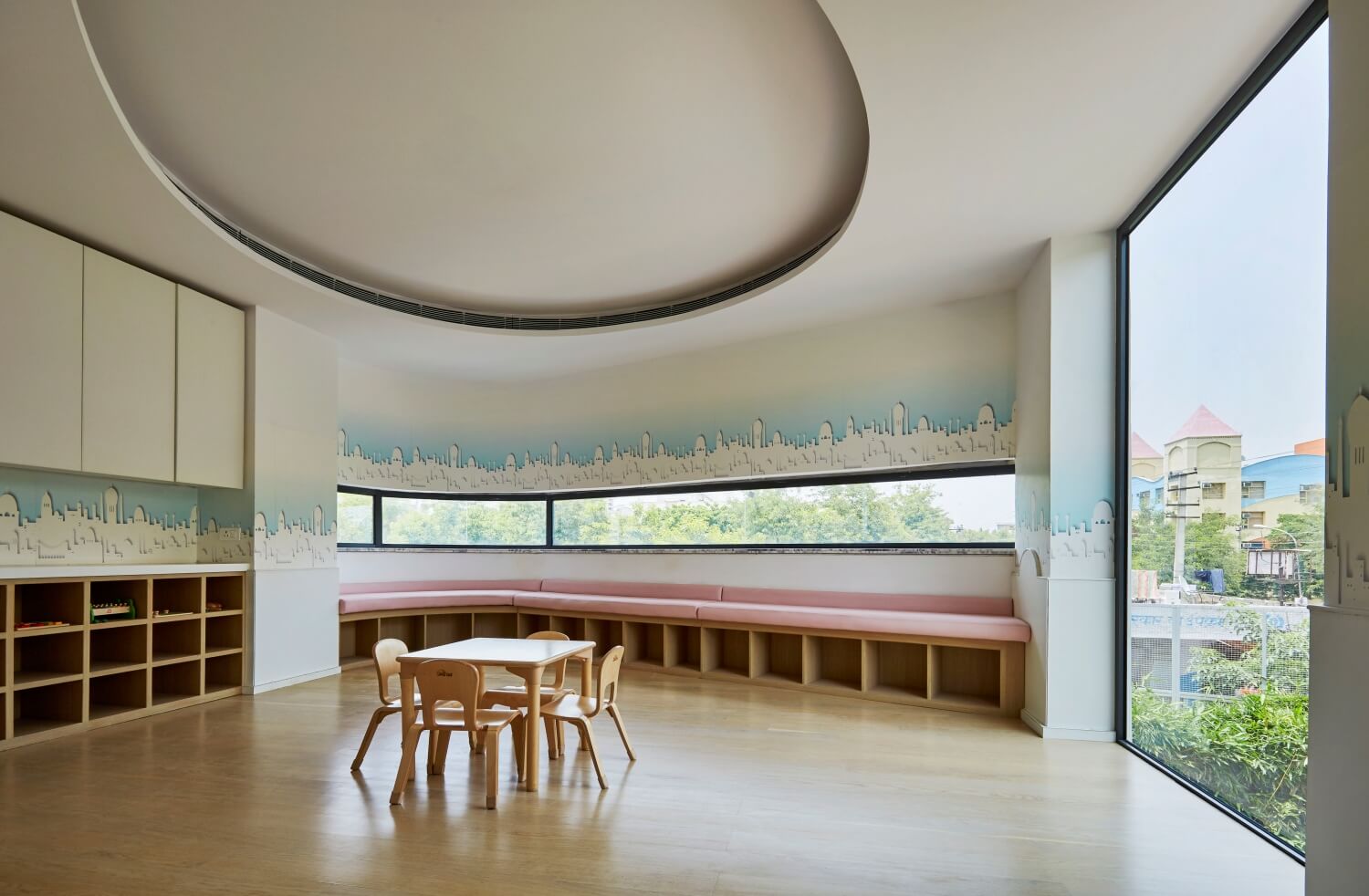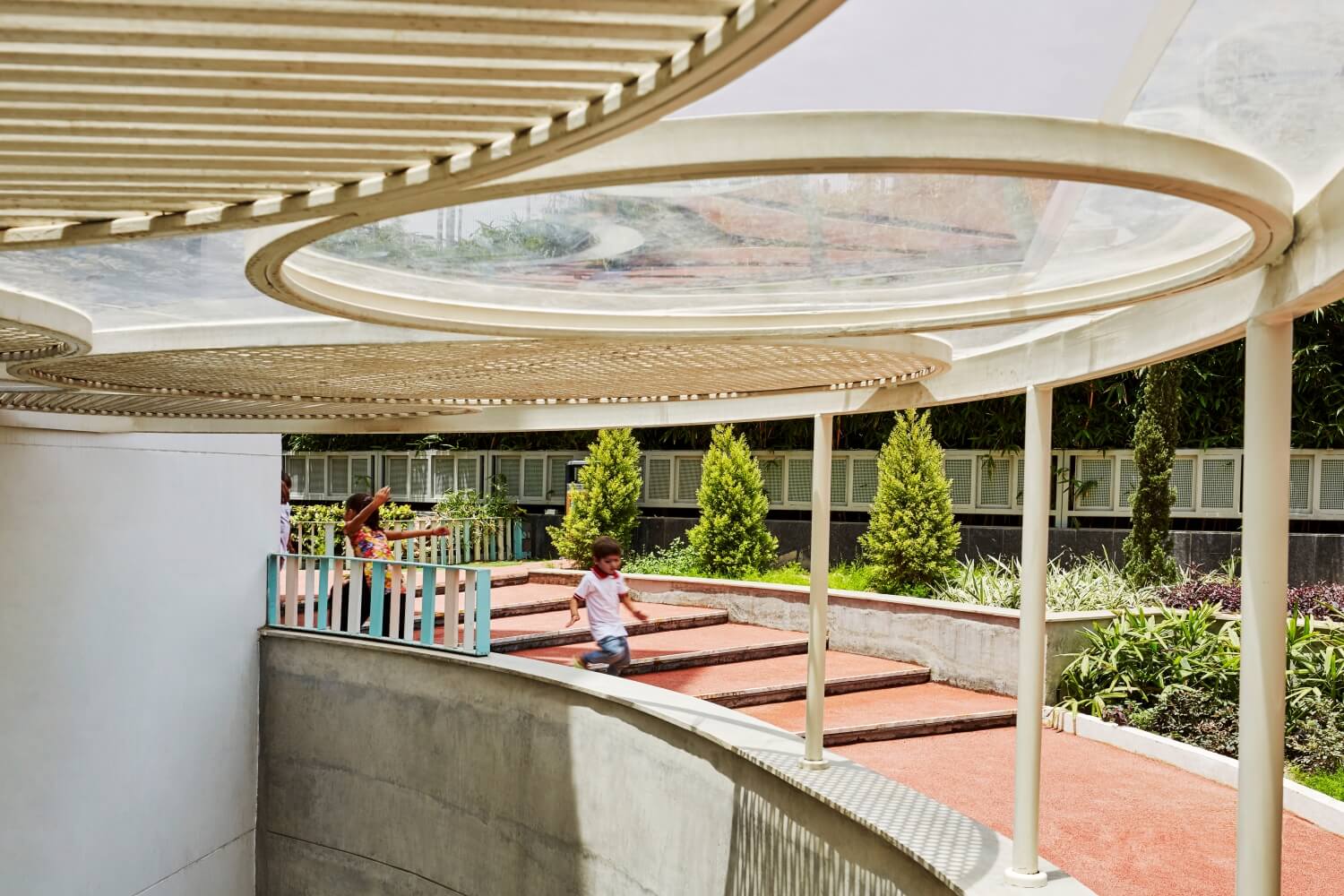Singapore International Preparatory School, Gurugram
The SIS School, Gurugram is a primary institution that aims to promote holistic development of a child. It is conceived as an environment that nurtures and shapes the personality of children through their formative years. The school seeks to immerse children in a creative milieu, building new relationships and ways of engaging with the external environment.
Giving the users (young children, in this case) foremost importance, the process begins by centering around them. The form-al development of the building counters the natural angle of the site- the sharp angles are moulded to carve out a fluid, turning form, representing a soothing and seamless fostering environment for the children. Spaces with no restrictions are thereby conceptualised, for users to move freely between the various programmes/portions of the building. While light, colour and pattern are developed as educational tools, extending the classroom curriculum into the spatial environment. The resultant form engenders an interplay of light, shadow and porosity enabling the ‘outside’ to flow inwards into the spaces. Balconies are extruded across the kids’ areas to extend physical access to the wide views. The composition of the building mass, openings and voids generates interior spaces that allow for effortless and uncomplicated movements within. As a response to the climate, the south façade is entirely closed while the west façade is strategically designed with all the services, screened by louvres. An exposed concrete and glass edifice represents honest materiality. A sunken open-air theatre towards the east facilitates the process of evaporative cooling. A juxtaposed central atrium brings in natural light, ventilation and visibility. Owing to the conception of collaborative activities, the atrium is constructed across various levels with unconventional and playful architectonic features.
The raw material palette applied remains consistent to the idea of user-centricity. Built for a peer group that perceives openly, free from the worldly constructs – the spaces provide an experiential environment in soft, earthy, natural tones with green terraces alternating along the implied ‘front’ toinduce an organic character and ‘soften’ the form’s edges.
A consequence of the adaptable and fluid form are the interior spaces; the spatial organization conforms to the needs and movements of the children.
The intention of the overall process echoes through the child-centric environment that is ultimately created – one that youngsters can explore and call their own. Adhering to a process driven methodology from conception to completion, the SIS School offers an uncomplicated captivating ambiance.
